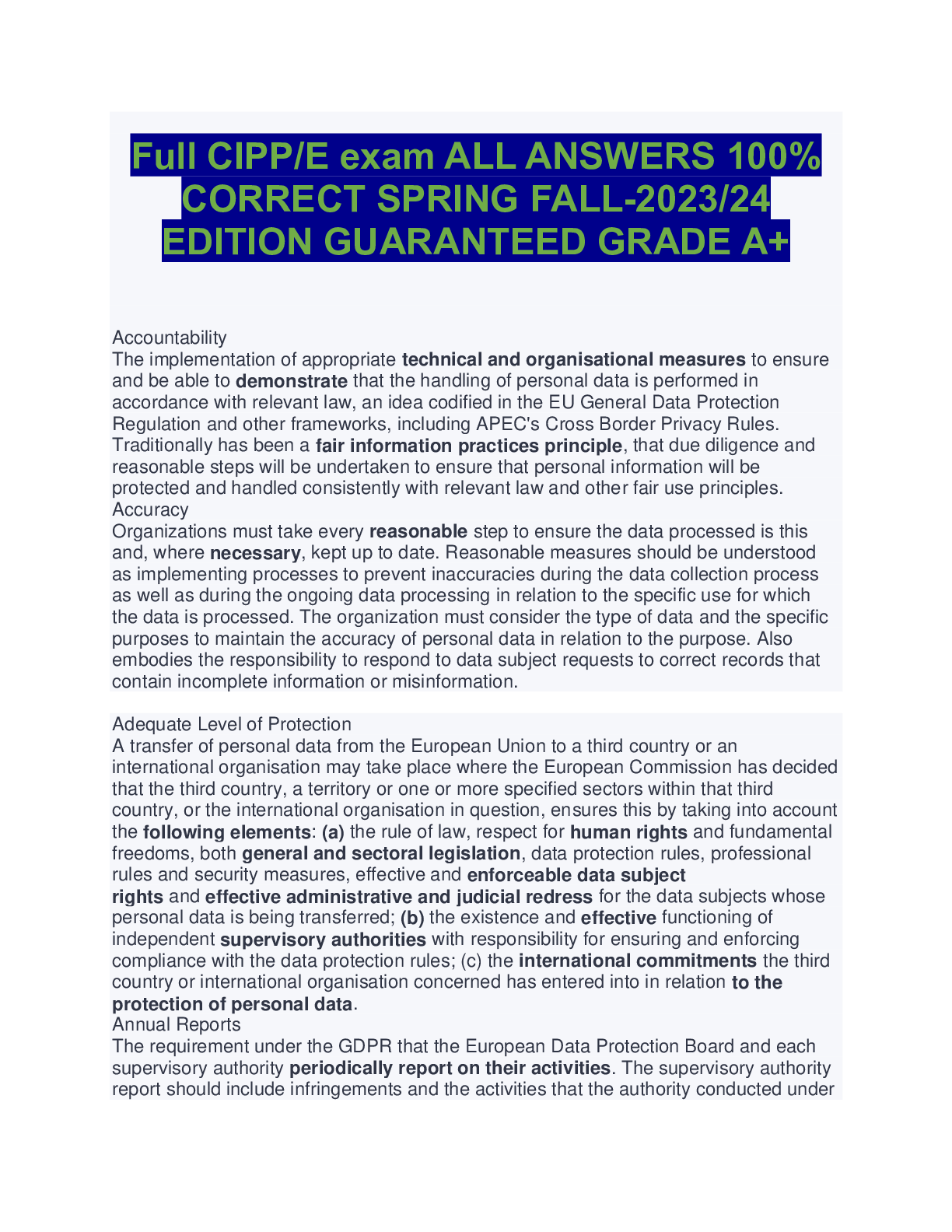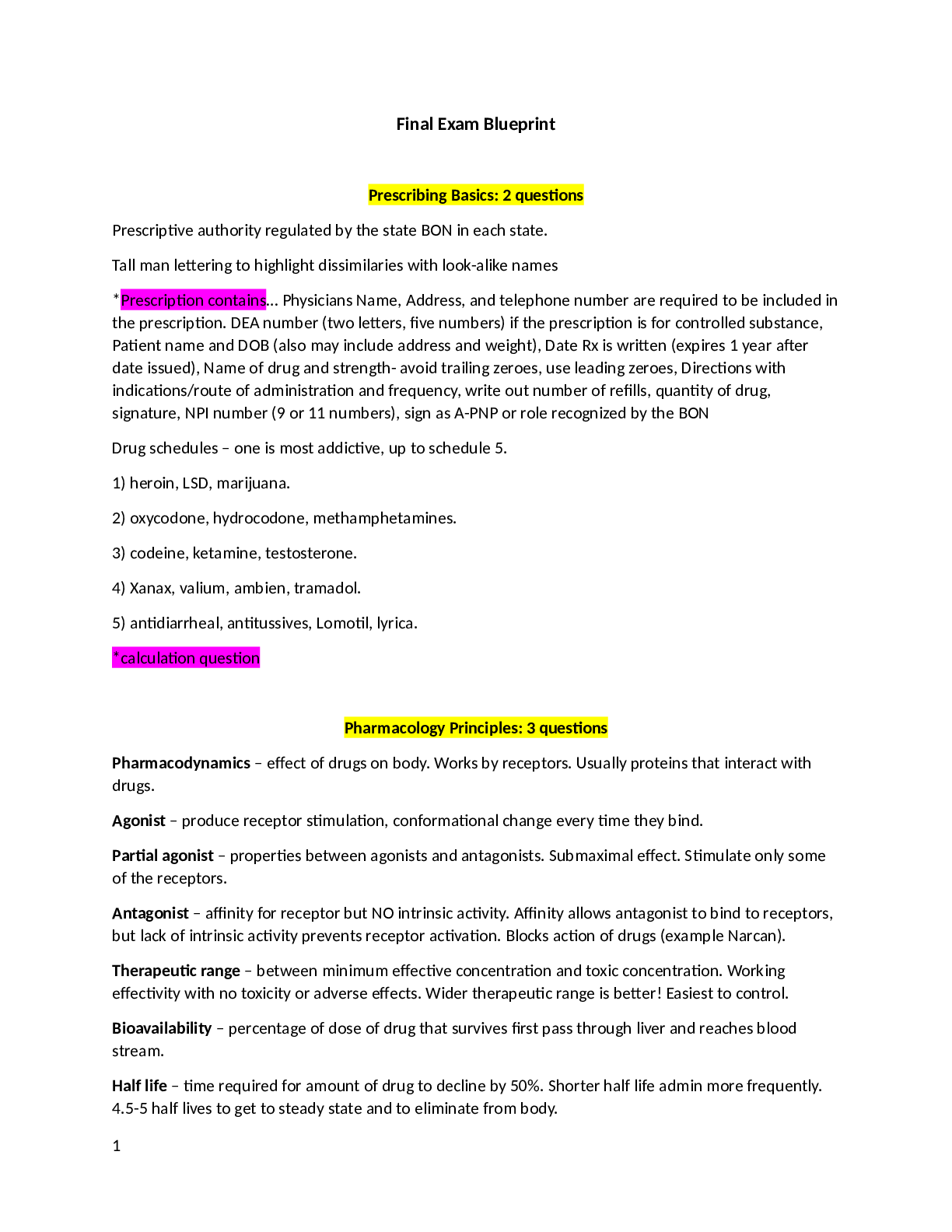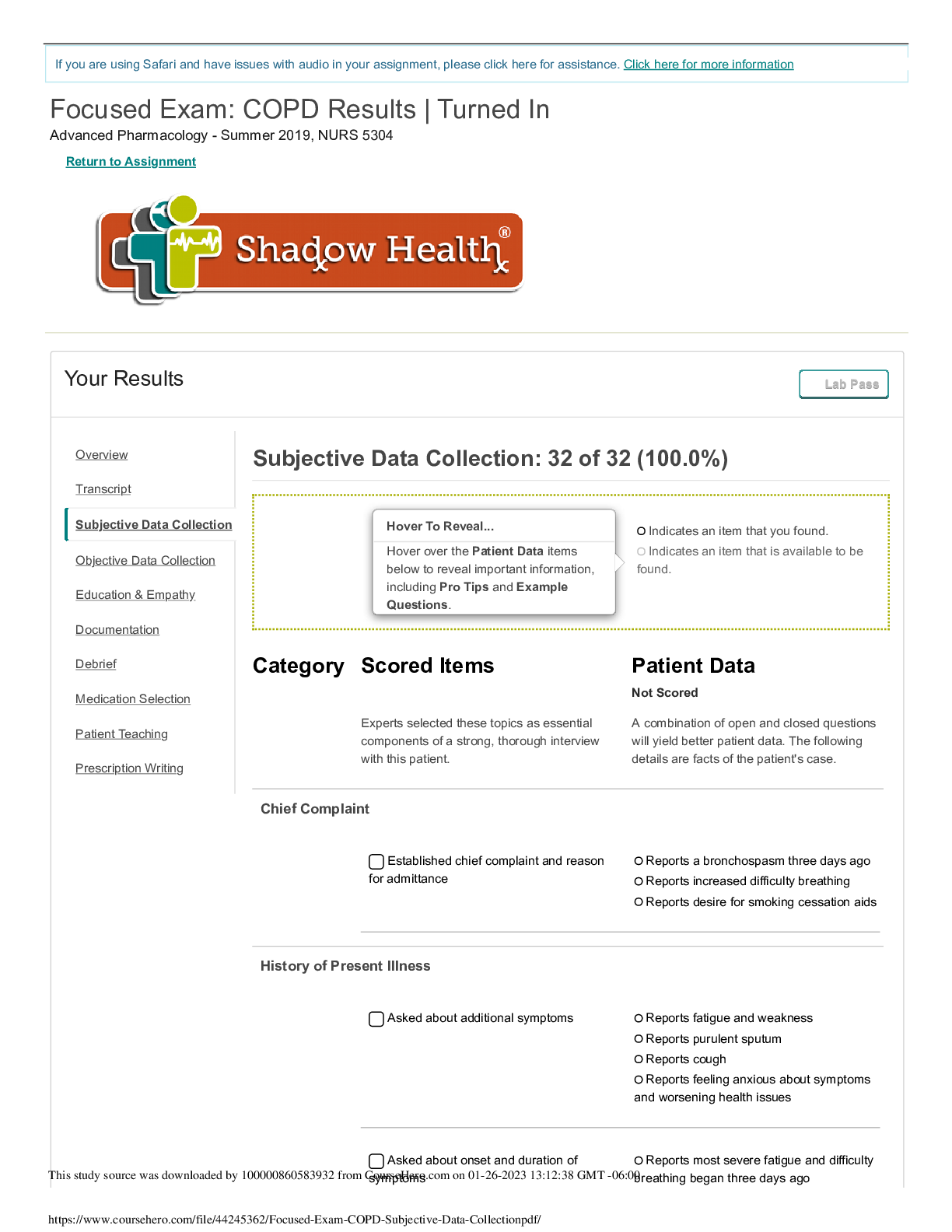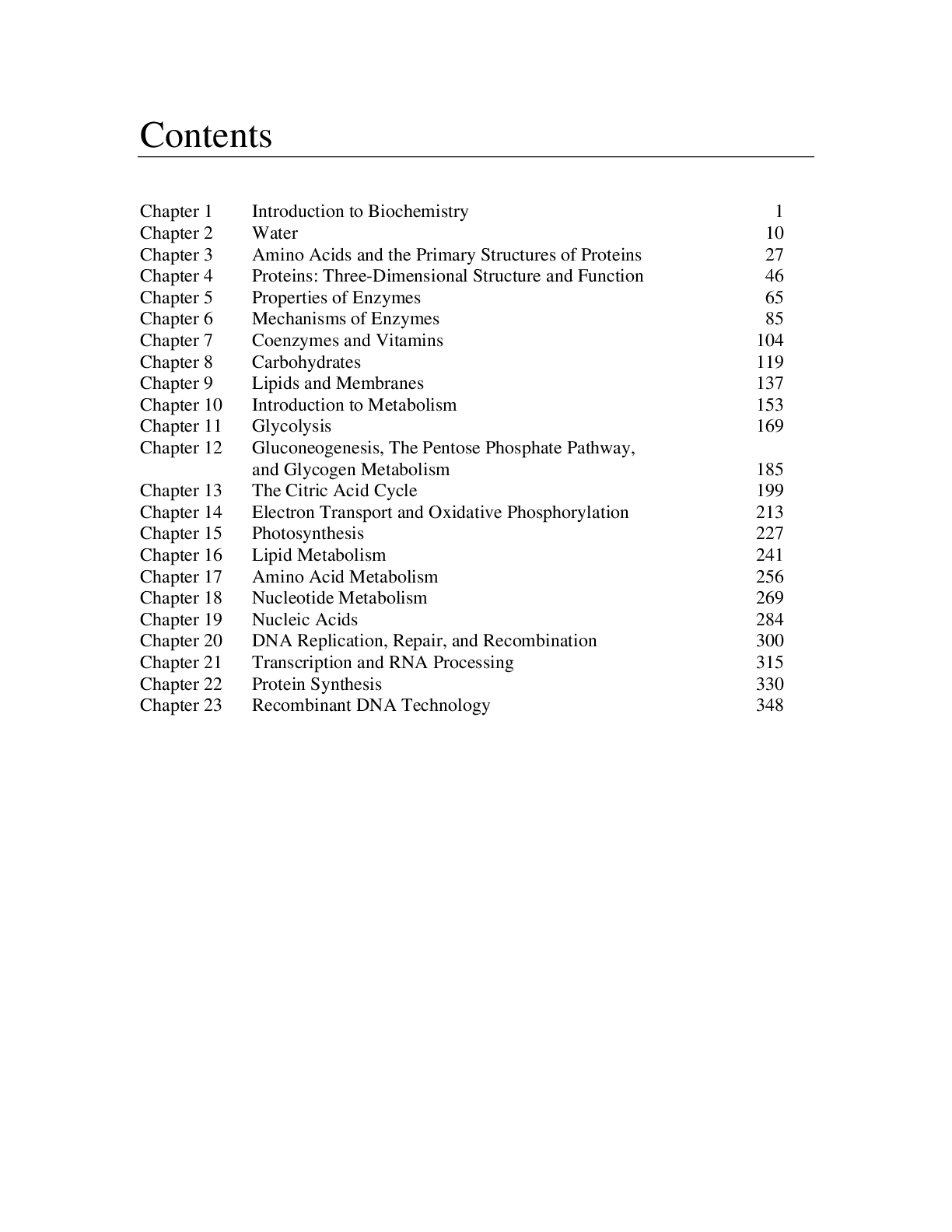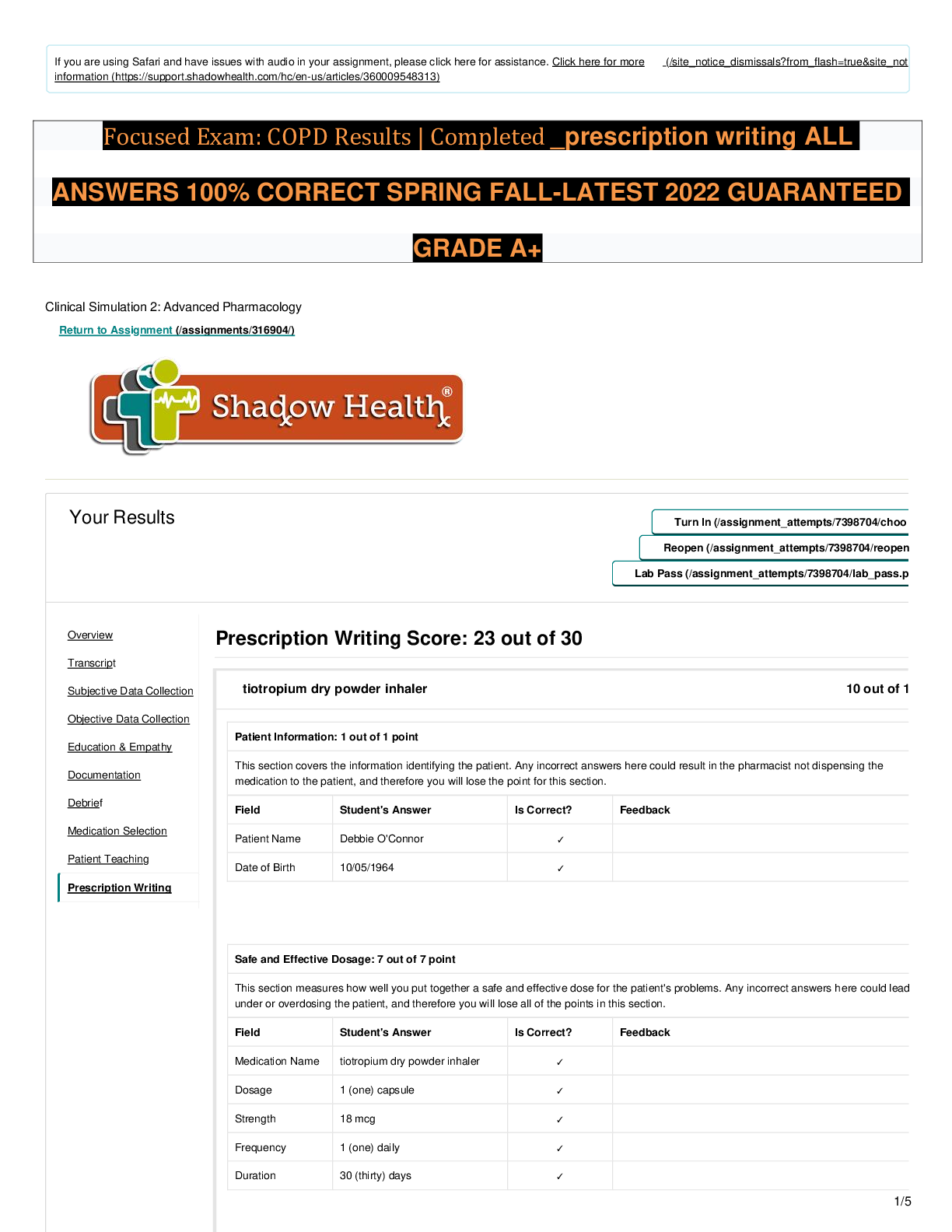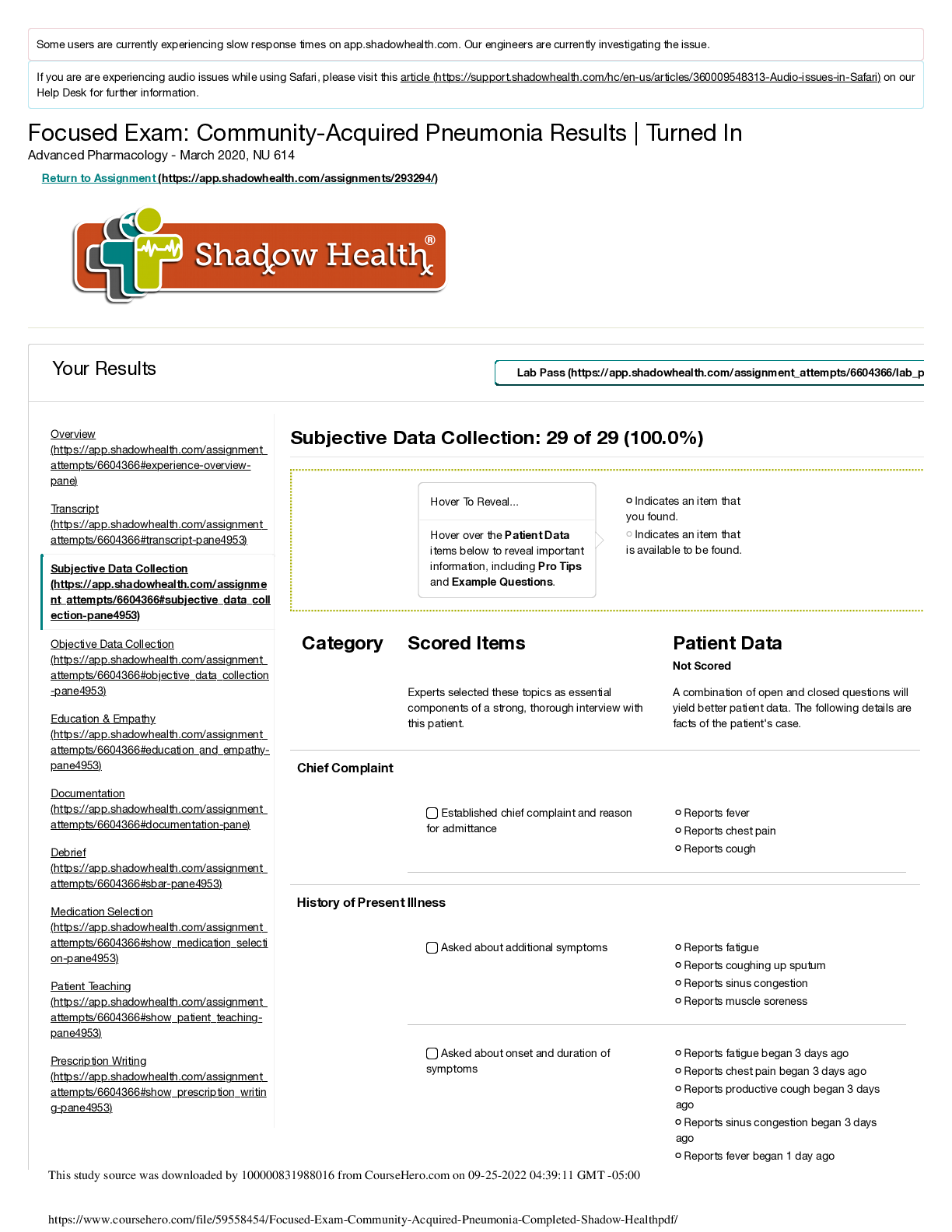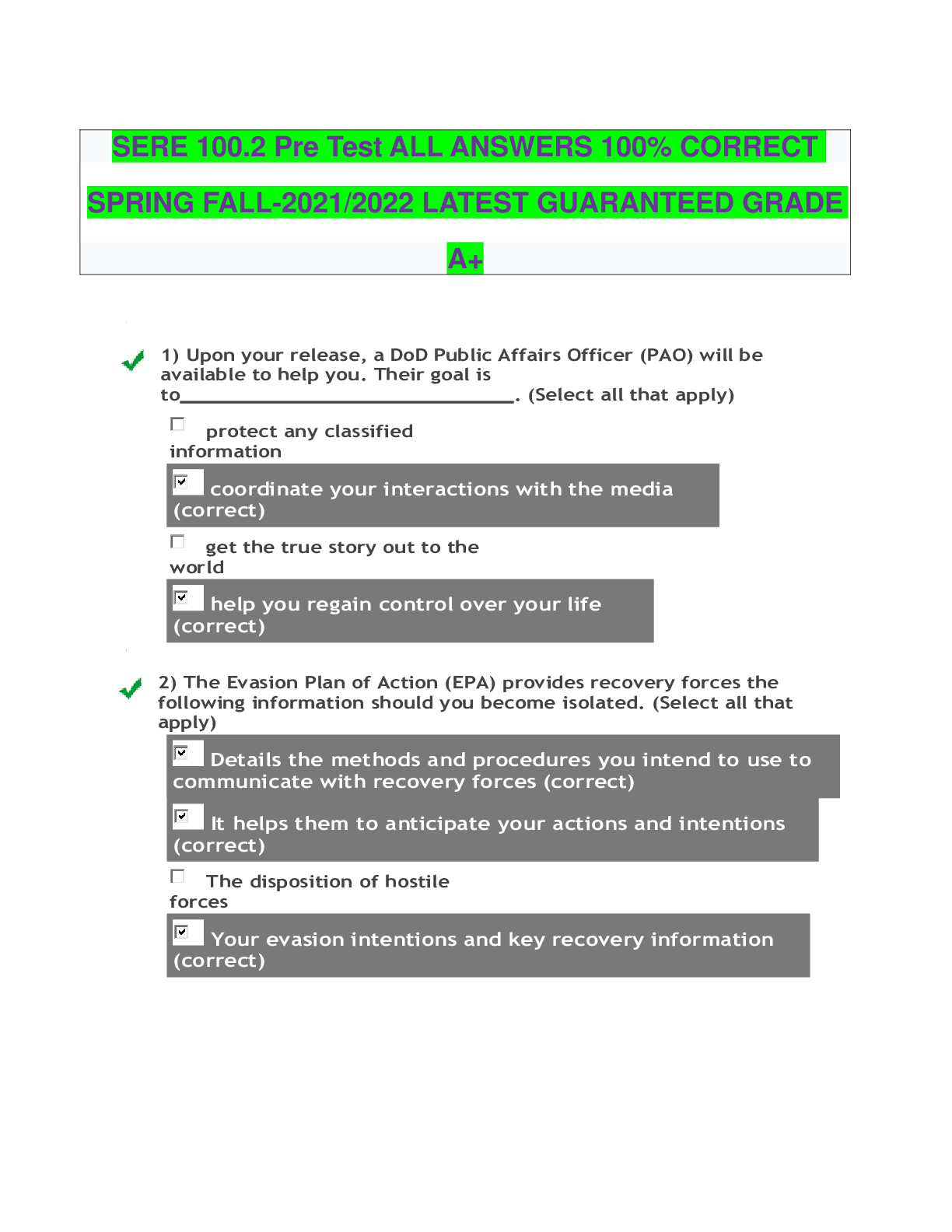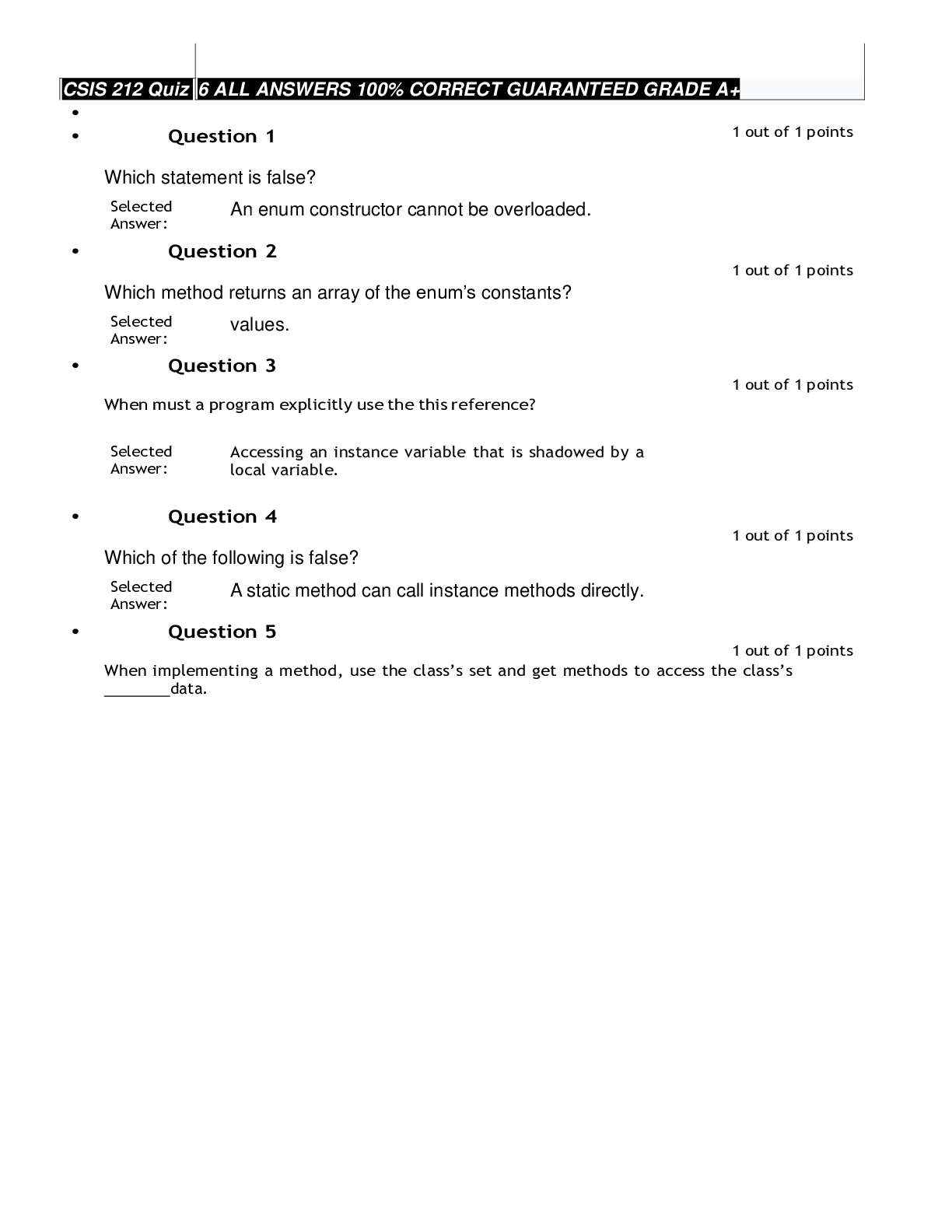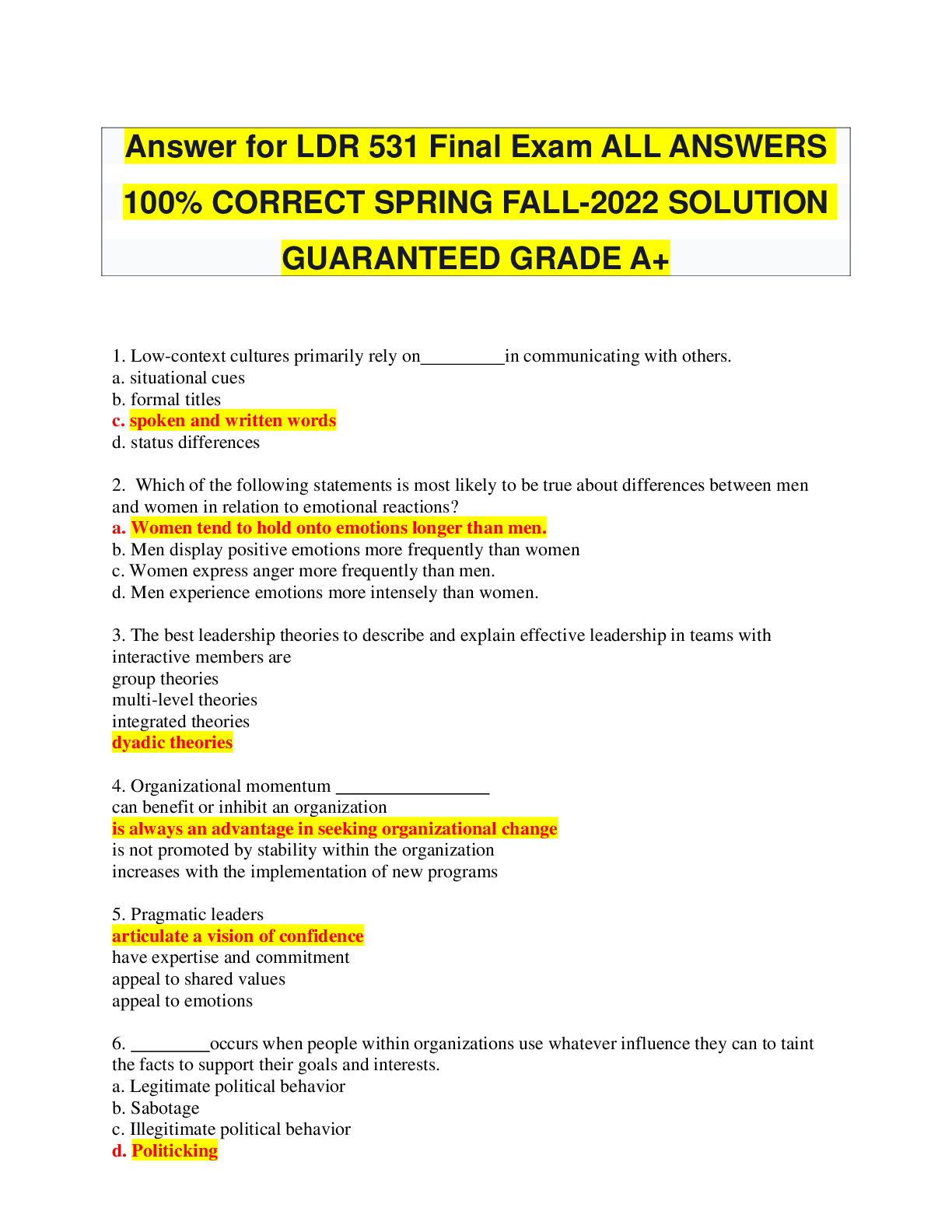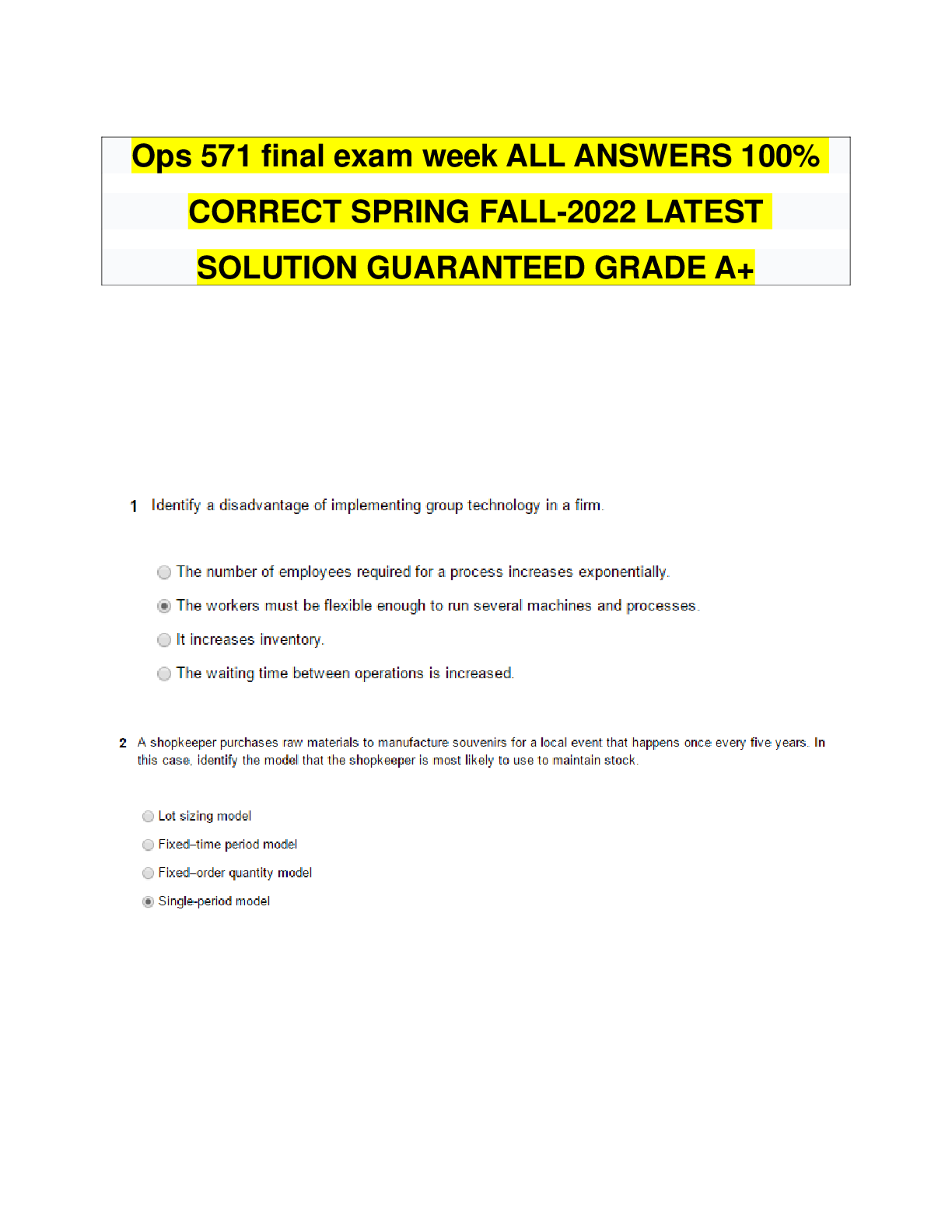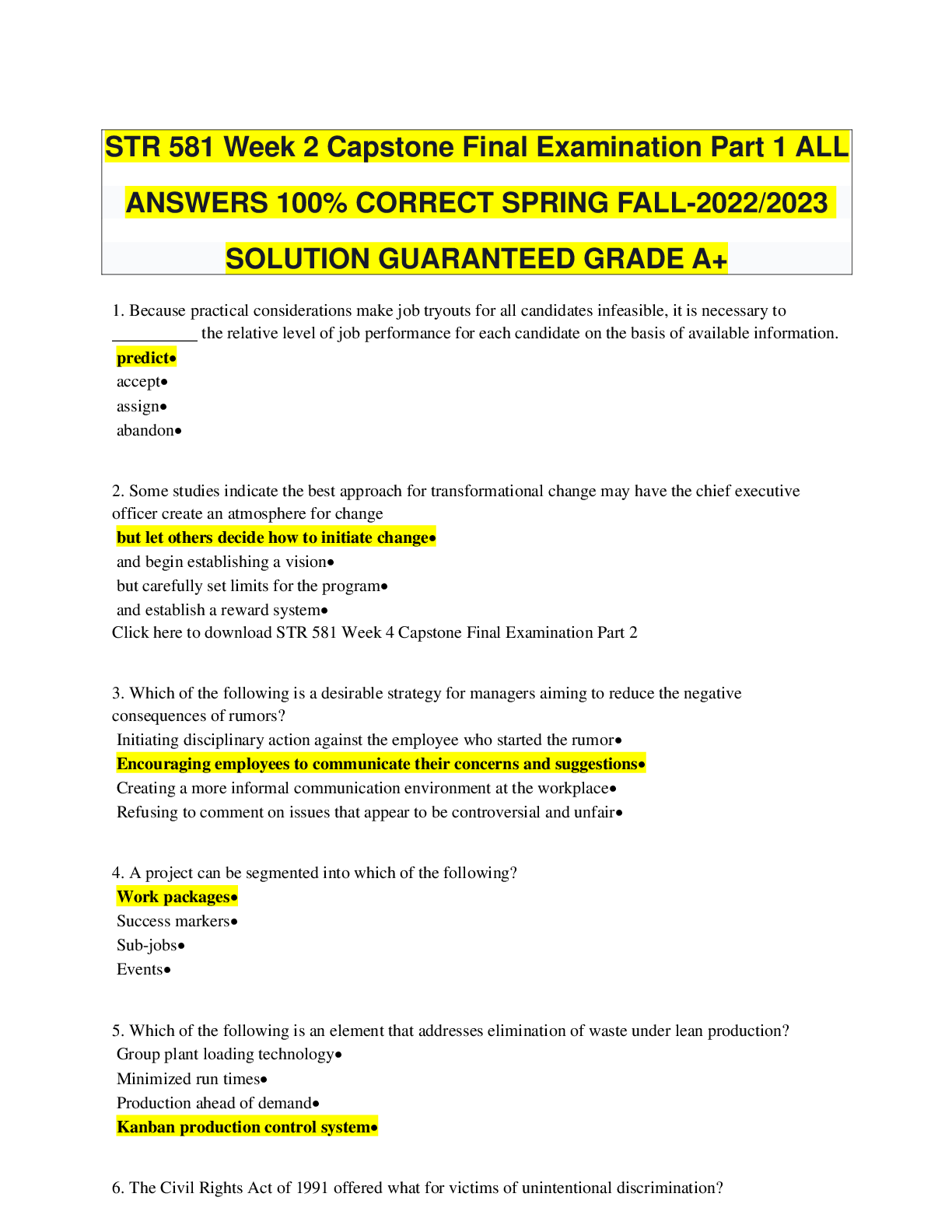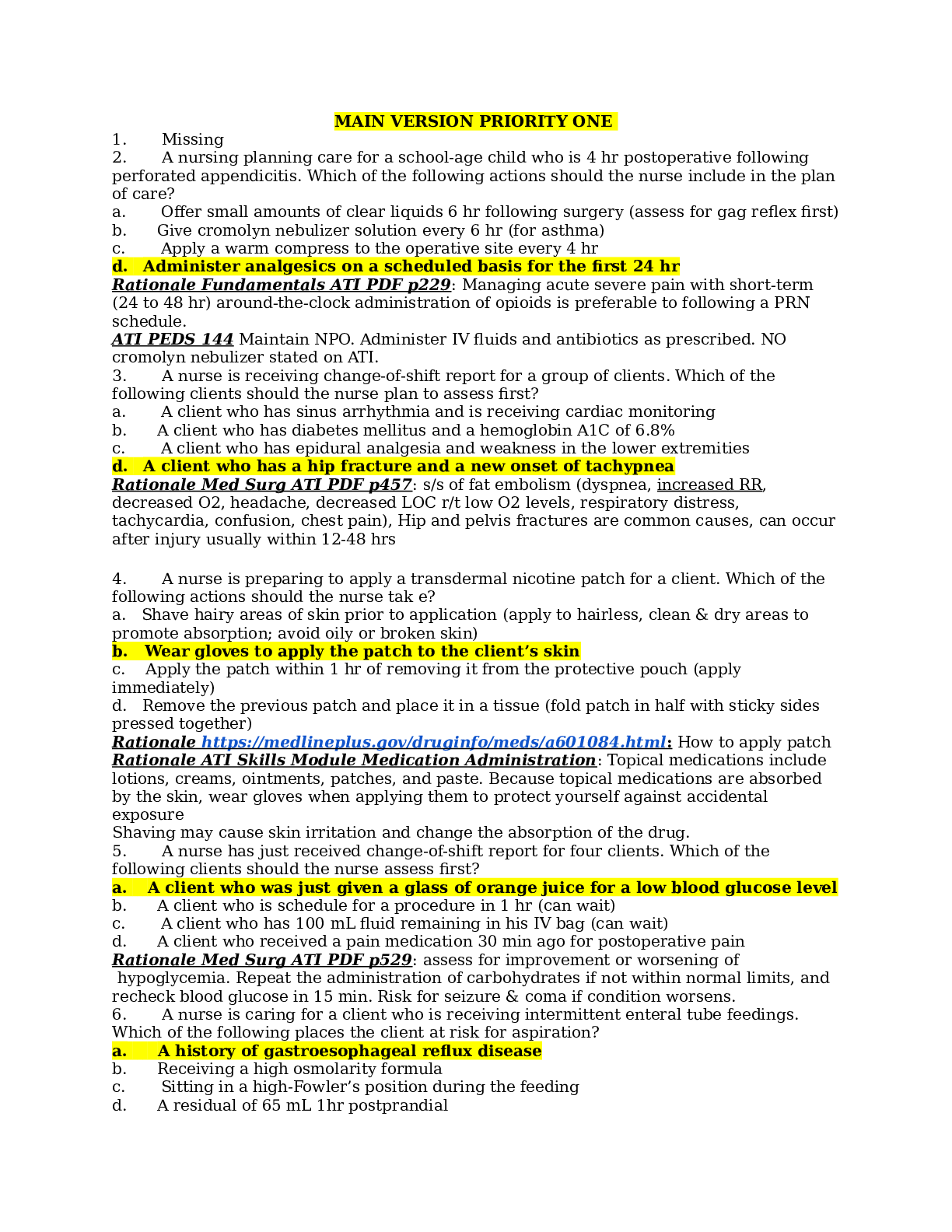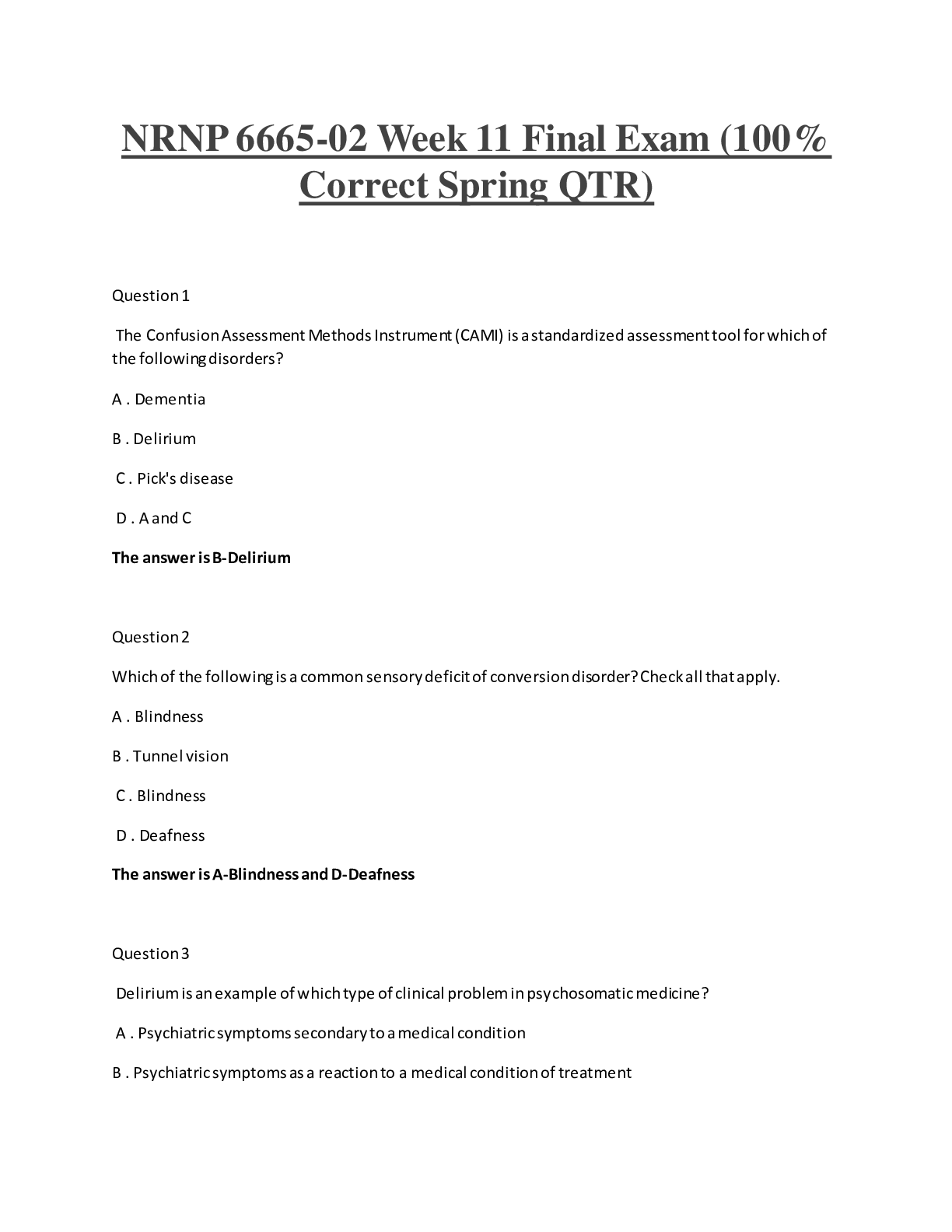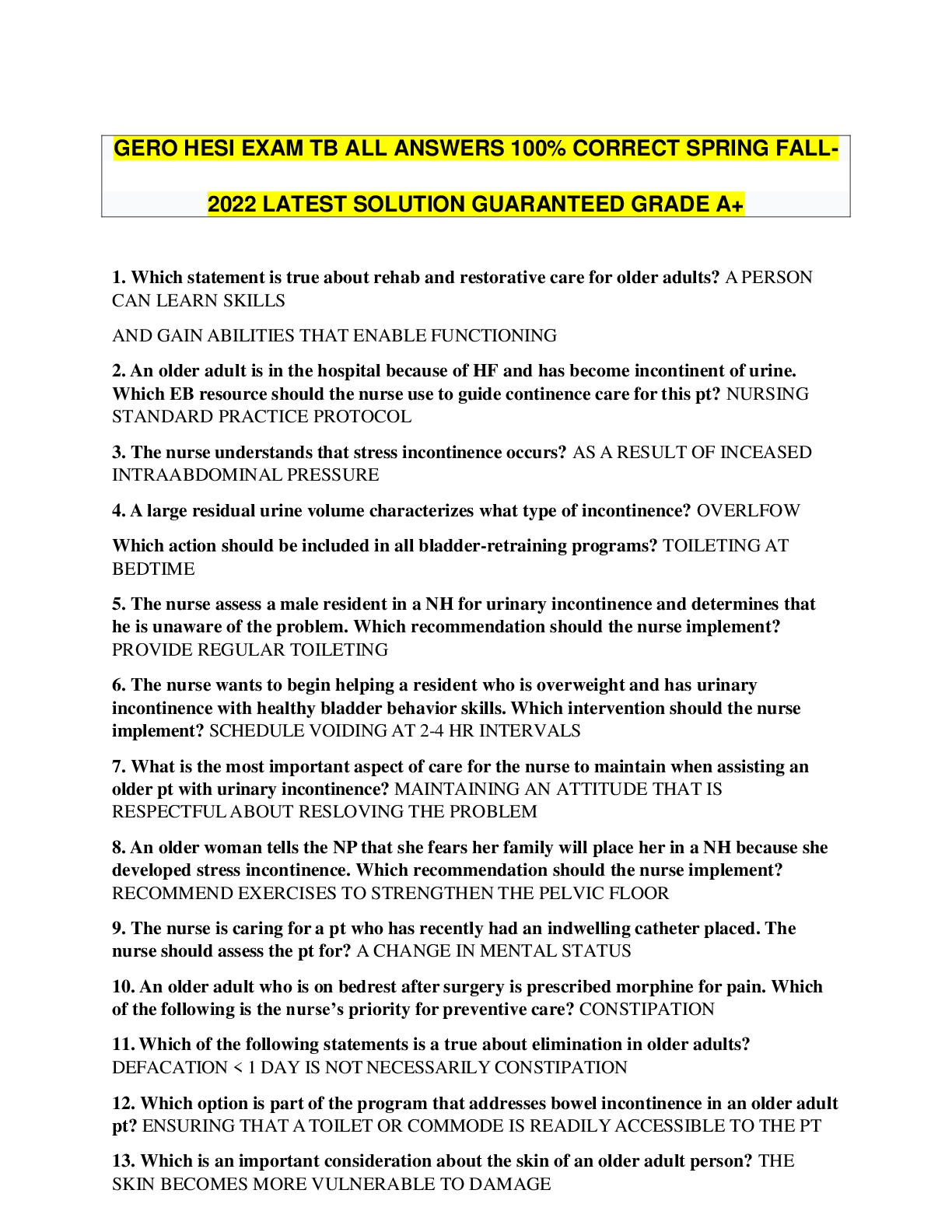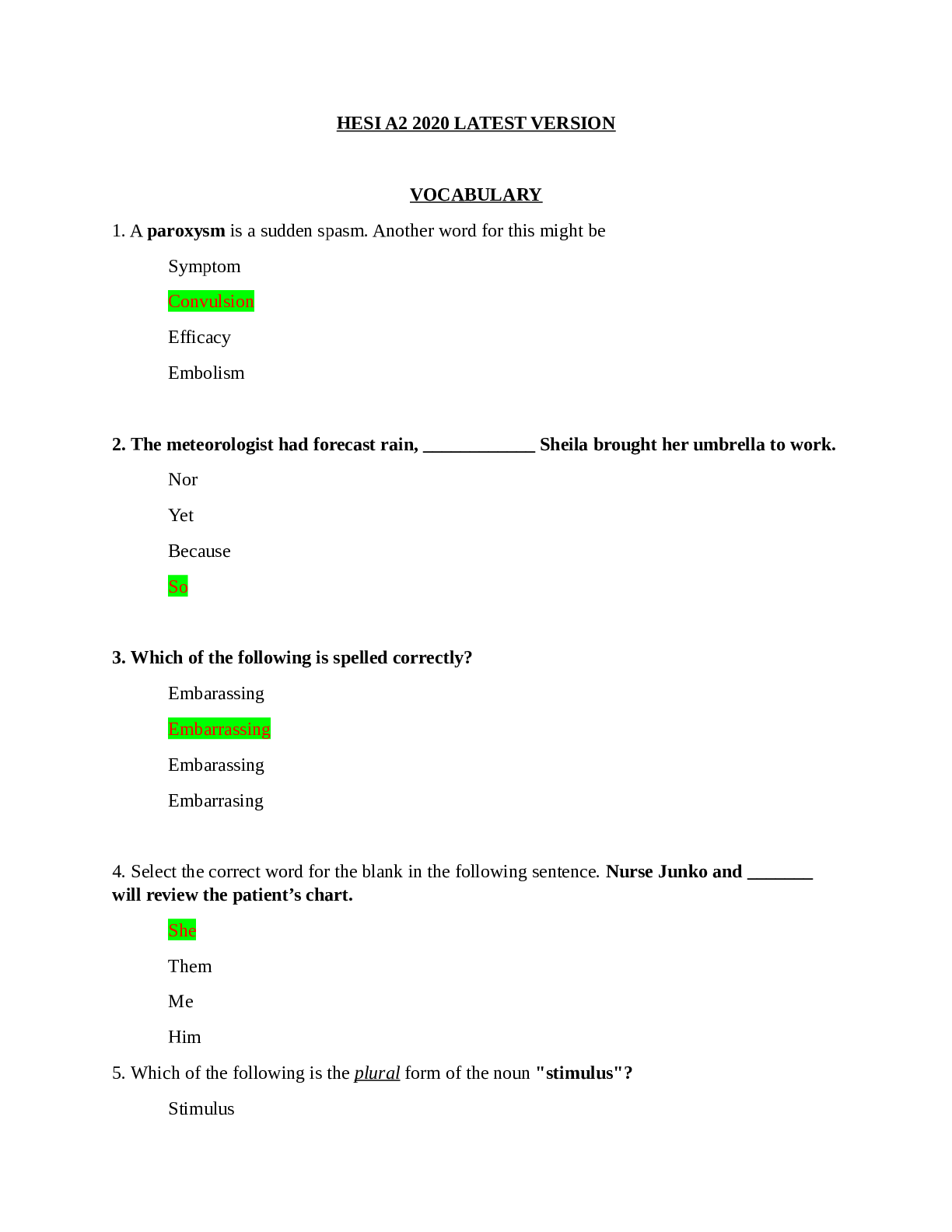Material Science > EXAM > CA Law and Ethics Exam ALL SOLUTION GUARANTEED GRADE A+ ANSWERS 100% CORRECT SPRING FALL-2023/24 EDI (All)
CA Law and Ethics Exam ALL SOLUTION GUARANTEED GRADE A+ ANSWERS 100% CORRECT SPRING FALL-2023/24 EDITION
Document Content and Description Below
Applicable California law and a practitioner's professional code of ethics (such as the NASW or CAMFT Code of Ethics) ... ... do NOT hold equal weight in court cases. Only some of the ethical standar... ds outlined in the professional ethical standards are enforceable guidelines for professional conduct. The extent to which ethical standards are legally enforceable is a matter of professional judgment on the part of those responsible for reviewing alleged violations. As opposed to boundary crossings, boundary violations occur when practitioners do which of the following? Exploit clients or engage in unacceptable dual relationships with clients. As opposed to boundary violations, boundary crossings occur when practitioners do which of the following? Develop acceptable and, perhaps, unavoidable dual relationships with clients. Dual relationships between social work practitioners and clients ... Are sometimes unavoidable; when dual relationships occur, they require careful and skillful management. Dual relationships occur consecutively and simultaneously. TRUE. Dual relationships can occur consecutively and simultaneously. Examples of a consecutive dual relationship include hiring a former client and becoming friends with a former client. Examples of a simultaneous dual relationship include having unanticipated social contact with a current client and accepting a gift from a current client. The NASW Code of Ethics prohibits sexual relationships between social workers and former clients ... Under all circumstances, with the proviso that if social workers engage in conduct contrary to this prohibition or claim that an exception to this prohibition is warranted because of extraordinary circumstances, it is social workers—not their clients—who assume the full burden of demonstrating that the former client has not been exploited, coerced, or manipulated, intentionally or unintentionally. The NASW Code of Ethics prohibits all physical contact between social workers and clients. FALSE. The Code recognizes that physical contact between practitioners and clients may be permissible in narrow circumstances. Examples include handshakes or a brief hug at the conclusion of the professional-client relationship. However, practitioners should recognize that any physical contact can introduce complex boundary issues. In some instances, clients' religious or cultural beliefs may prohibit physical contact. Practitioners who consider any form of physical contact with clients should consider the potential for psychological harm. The first Institutional Ethics Committee (IEC) in the United States was established in conjunction with which of the following? Karen Ann Quinlan case. The first formal institutional ethics committee in the United States was established in the mid-1970s in the context of the famous case involving Karen Ann Quinlan. Ms. Quinlan was hospitalized and in a persistent vegetative state following a drug overdose. Quinlan's parents and hospital staffers disagreed about termination of life support technology. The case went to court, which led to the creation of an ethics committee to provide consultation; as a result, such committees are now widespread. Dual relationships between a practitioner and a client can occur in which of the following contexts? Dual relationships can arise in the form of social, business, or professional relationships between practitioners and current and former clients. Social relationships can arise when practitioners and clients live and work in the same community. Business relationships can arise when practitioners and former clients join forces in real estate investments. Professional relationships can arise when practitioners and their agencies hire former clients as peer-support specialists. Which of the following is not one of the primary purposes of Institutional Ethics Committees (IECs)? Binding decisions when IECs are consulted about ethical dilemmas. Typically, ethics committees include interdisciplinary membership and provide nonbinding consultation on complex ethics cases. Professionals, clients, and interested third parties may request consultation. Many ethics committees also sponsor ethics education and training, and some ethics committees become involved in the development of ethics-related policies. According to the NASW Code of Ethics, social workers should explore and participate in bartering only in very limited circumstances, including which of the following? The Code discourages bartering arrangements between social workers and clients but does not prohibit them entirely. According to the Code, social workers should explore and participate in bartering only in very limited circumstances, namely, (1) when it can be demonstrated that such arrangements are an accepted practice among professionals in the local community, (2) when bartering is considered to be essential for the provision of services and is negotiated without coercion, and (3) when the bartering arrangement is entered into at the client's initiative and with the client's informed consent. The concept of "judicious self-disclosure" refers to which of the following? The idea that practitioners should exercise sound judgment about when self-disclosure to clients is in clients' best interest and is not likely to harm them. The concept of judicious self-disclosure refers to circumstances in which practitioners carefully weigh the potential benefits and risks associated with sharing personal information about themselves with clients. In contrast, gratuitous self-disclosure entails unnecessary and unethical self-disclosure that is likely to lead to boundary confusion. Standards of care related to managing boundaries may be different in geographically small communities than in large metropolitan areas. Some standards of care related to boundaries are clear-cut. For example, practitioners should never engage in sexual relationships with clients. However, in many instances, standards of care are vague. A common example involves practitioners' management of boundaries when they live and work in small or rural communities. Encounters with clients in these communities may be inevitable and require skillful management to protect clients and avoid boundary confusion. The concept of "natural history of boundary violations" refers to the idea that boundary confusion between practitioners and clients can develop incrementally, over time. TRUE. In many cases, boundary violations occur after a series of earlier indiscretions with increasingly complex boundary confusion. What ends up as a boundary violation begins as casual banter and informal conversations about non-therapy matters. Over time, the professional-client boundaries may become increasingly fluid, confusing, and exploitative. Clinicians who consider entering a dual relationship with a former client should consider Practitioners who encounter the possibility of dual relationships should carefully consider several factors, including the amount of the practitioner's power over the client (for example, if the clinician provided court-ordered counseling), the client's clinical profile (especially when clients struggle to maintain clear boundaries in their personal lives), and the conditions surrounding termination of the clinical relationship (for example, whether the professional-client relationship ended because the clinical work concluded on its own, as opposed to having terminated to move to an intimate relationship). An act of omission (as opposed to commission) related to boundaries occurs when a practitioner ... [Show More]
Last updated: 1 year ago
Preview 1 out of 12 pages
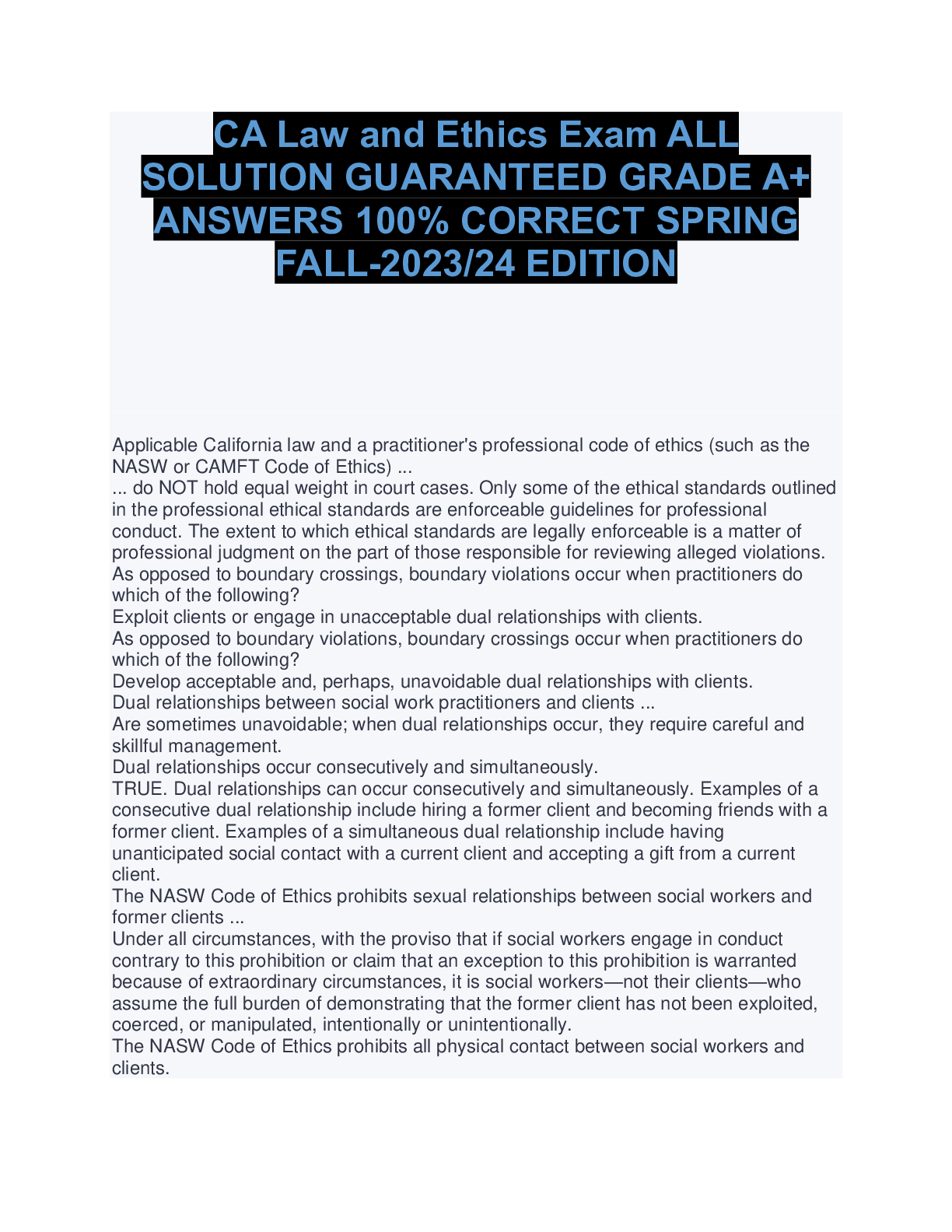
Reviews( 0 )
Document information
Connected school, study & course
About the document
Uploaded On
Jan 16, 2023
Number of pages
12
Written in
Additional information
This document has been written for:
Uploaded
Jan 16, 2023
Downloads
0
Views
75





